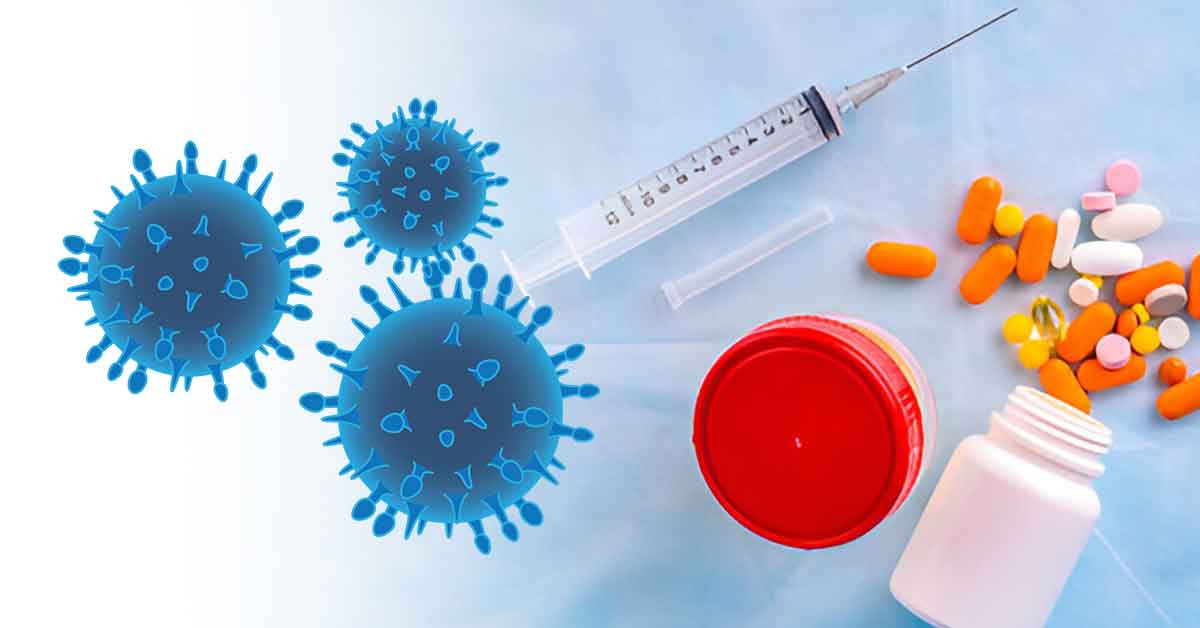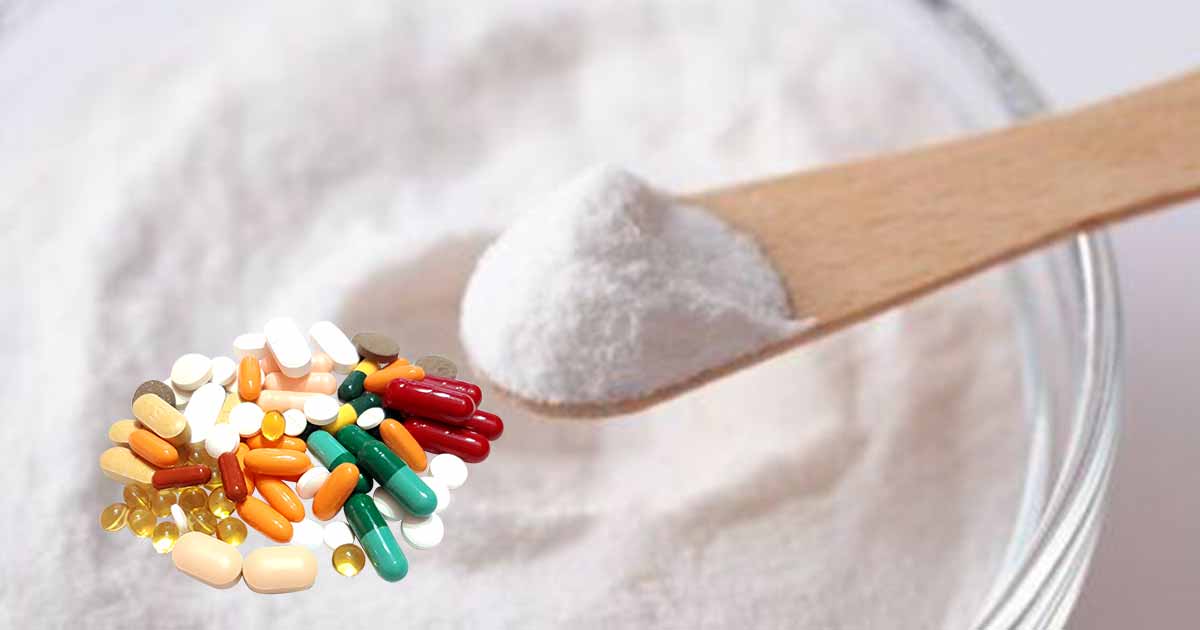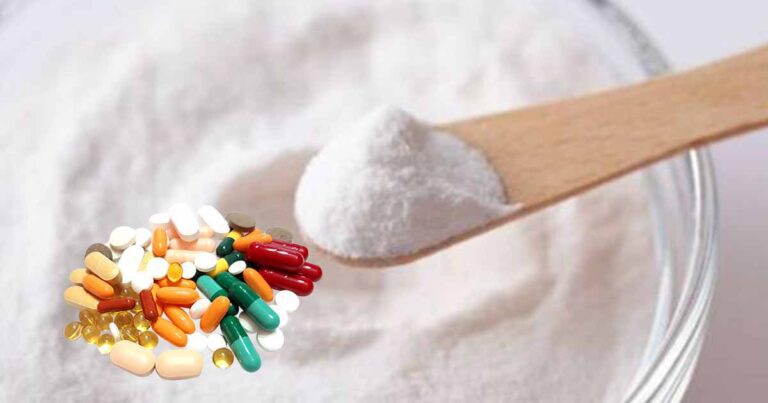Fungal infections are caused by microorganisms that attack the epithelial tissue. They obtain their food from the environment, just like animals (heterotrophic). Some fungi can be beneficial, and help in biodegradation, others cause opportunistic infections when they find their way to the skin, lungs and nasal passages. The fungal kingdom includes yeasts, molds, rusts, and mushrooms.
The first triazole antifungal agents — fluconazole and itraconazole, were released in the early 1990s, while lipid amphotericin B (AMB) formulations were discovered in the late 1990s. However, the emergence of resistant strains of non-albicans Candida species and moulds, necessitated the research and discovery of other antifungal drugs like newer generation of triazoles (second generation triazoles), and other antifungal classes like the echinocandins.
Now, there are four major classes of antifungal agents: polyenes, azoles, allylamines, and echinocandins.
Classification of Antifungal Infections
Fungi can cause superficial infections, systemic infection,s or opportunistic infections.
Superficial infections (dermatophytic infection):
Dermatophytes of the Microsporum, Trichophyton, and Epidermophyton genera can cause superficial infection in the skin. The infection is named after the site of infection and not the organism that causes it.
Superficial infections include Tinea corporis (ringworm), Tinea cruis (jock itch), Tinea pedis (athlete’s foot), Tinea capis (scalp), Tinea barbae (beard/hair).
Some causative organisms include T. rubrum, M. canis, T. mentagrophytes, and E. floccosum.
Systemic Infections:
The inhalation of the fungal spores can cause fungal pneumonia, which can be transmitted from person to person.
The infection includes Coccidioidomycosis (Cocidioides immitis), Blastomycosis (Blastomyces dermatitidis), and Histoplasmosis (Histoplasma capsulatum).
Opportunistic Infections:
Opportunistic Infections do not affect healthy individuals but can cause serious, and sometimes life-threatening infections in immunocompromised patients like those with cancer, HIV, diabetes, leukemia, and other blood disorders patients.
They include Cryptococcal meningitis (Cryptococcus neoformans), Pneumocystis carinii (pneumonia Pneumocystis carinii), Aspergillosis (Aspergillus sp.), Mucormycosis (Murcor sp.), and Candidaisis, Thrush, Vulvovaginitis (Candida albicans).
Mechanism of Action of Antifungal Agents
It is important to note that the fungal cell wall and bacterial cell wall differ considerably, so antibacterial cell wall inhibitors (β-lactams or vancomycin) will not work against the fungi. This increases the need to develop antifungal agents that target fungal cells.
The mechanism of action of antifungal drugs includes inhibition of cell wall formation, inhibition of cell division, and disruption of the cell membrane.
Inhibition of Cell Wall Formation:
Bacteria cell walls has been successfully inhibited by antibacterial agents like penicillins and cephalosporins. However, the same success has not been achieved with fungal cell wall biosynthesis. These fungal agents target β-glucan synthesis.
Disruption of Cell Membrane:
The disruption of the cell membrane is through targeting ergosterol. They target ergosterol either by binding to sterol, forming pores and causing membrane leakage (polyene antifungals), or inhibiting of ergosterol synthesis (azole antifungal agents).
The egosterol is similar to the mammalian cholesterol, which means these agents can have cytotoxic effect in the tissue of the host.
Cell Division Inhibition:
Nucleoside antifungal agents affect the cell division by targeting the microtubule effects in creating the mitotic spindle, or the inhibition of DNA transcription.
Classification of Antifungal Drugs
Antifungal Agents that Disrupt the Cell Membrane
Polyene Antifungal Agents
These antifungals disrupt the cell membrane of the fungi by targeting the fungal cell membrane component called ergosterol, causing the permeability of fungal cell membrane permeability and the loss of intracellular constituents. They are active against molds, yeasts and dermatophytes.
Polyenes have activity against protozoa like Leishmania spp.
Examples include Amphotericin B, Nystatin, Natamycin
Amphotericin B:
Amphotericin B is a broad-spectrum antifungal agent that binds to the ergosterol in the membrane of the fungi, causing leakage in the membrane. Amphotericin B is a gold standard in treating severe to life-threatening fungal infection. Since it is not orally absorbed, it is administered as a colloidal dispersion by slow IV infusion. Do not administer intramuscularly.
The oral solution of Amphotericin B is used to treat oral candidiasis in persons with HIV infection, while the topical formulation is used to treat cutaneous and mucocutaneous mycoses caused by C. albican.
It has a poor penetration of the CNS, therefore in treating infection involving the CNS, amphotericin B is mixed with cerebrospinal fluid obtained from the spinal tap, and injected through the tap.
The adverse effects include headache, fever, anorexia, muscle and joint pain, injection site pain, nephrotoxicity, hematological disorders, thrombophlebitis. Lesser side effects include convulsion, hearing loss, neuropathy.
The adverse effects, especially nephrotoxicity occur in 80% of treated individuals, and could be reduced by using liposomal preparations.
Popular brands of amphotericin B include Fungizone, Aphotec, AmBiosome, and Abelcet.
Nystatin
This is another polyene antifungal agent that acts similarly as amphotericin B and has a ring structure. It is a conjugated tetrane that was initially isolated from Streptomyces noursei in 1951. Nystatin is the first clinically used polyene antifungal antibiotic. Mycostatin is the brand name.
Nystatin is an ionophore ( “ion carrier“) which at high concentrations, form pores in the membrane, leading to K+ leakage, acidification, and fungal death.
It is used to treat gut candidiasis, oral candidiasis, and combined with tetracycline to prevent monilial overgrowth resulting from destruction of bacterial microflora of the intestine when on tetracycline. It is available as oral tablet, vaginal tablets, powder for suspension, and pastilles.
The side effects are not severe and include irritation, itching, and burning.
Natamycin
Natamycin (Pimaricin, Natacyn) is another polyene antifungal agent, that was first isolated from the culture of Streptomyces natalensis suspension for the treatment of fungal conjunctivitis, blepharitis, and keratitis. It is a 26-membered–ring polyenes that cause potassium leakage at low concentrations (fungistatic) and cell lysis at high concentrations (fungicidal)
It is available as a 5% ophthalmic suspension.
Azoles and Triazole Antifungal Agents
The azoles are ergosterol biosynthesis inhibitors. It is the largest class of synthetic antifungal drugs. They are used for treatment of both superficial dermatophytic and yeast infection and severe systemic fungal infection. The aromatic five-member heterocyclic, which is either an imidazole or a triazole, is responsible for the activity.
The imidazoles and triazoles inhibit CYP P450 14 α- demethylase, an enzyme that converts lanosterol to ergosterol in fungi. This causes accumulation of sterols, changes in the permeability and malfunction of membrane embedded proteins. The effect is fungistatic, but fungicidal at higher concentration.
About five topical azoles antifungals: miconazole, econazole, oxiconazole, sulconazole, and tioconazole, share common general structure, but differ in the elements attached to the central methylene carbon.
Some members of the class include the:
Substituted imidazoles:
Clotrimazole, ketoconazole, and miconazole have five-member azole nucleus that contains two nitrogens. Both clotrimazole, and miconazole, are not orally absorbed, but are used as topical agents. Ketoconazole which was discovered in 1984 is the first oral therapy for Candida.
Triazoles:
The newer triazole compounds including Itraconazole, Fluconazole, Voriconazole are potent oral therapy for many systemic fungal infection, with less side effects. The triazoles have higher selectivity due to the replacement of the imidazole ring with a bioisosteric triazole ring.
The first‐generation triazoles (fluconazole and itraconazole) are effective for treating superficial and invasive fungal infections, while the second‐generation triazoles (eg, voriconazole and posaconazole) have activity against molds, yeasts including Aspergillus species. Posaconazole is the only azole that has activity against zygomycete fungi.
Clotrimazole
This is a broad-spectrum imidazole antifungal used topically to treat oral, skin, and vaginal C. albicans infections.
Miconazole
This agent is available as cream, lotion, powder, spray liquid, spray powder, and vaginal suppositories. It is used to treat skin infections such as tinea pedis, and tinea cruris (dosing is once or twice for a month), and for vulvovaginitis ( daily at night for three to seven days).
It has side effects like fever, stomach pain, itching, irritation of the skin, vagina, burning, foul smelling vaginal odor.
Ketoconazole
Ketoconazole (marketed as Nizoral) is supplied as topical cream, shampoos, and oral tablets for the treatment of tinea pedis, tinea corporis, tinea cruris and cutaneous candidiasis.
The adverse effects include skin rash, dry skin, itching, dry scalp.
Fluconazole
Fluconazole (sold as Diflucan) is a tablet or suspension used to treat vaginal yeast infection, and yeast infection in other organs like mouth, throat, esophagus, lungs, stomach, blood. It is also used to prevent yeast infection in predisposed individuals, like people undergoing chemotherapy or radiation therapy before a bone marrow transplant, and also for treating meningitis.
It has adverse effects like headache, diarrhea, heartburn, stomach pain, issues with food tasting, tiredness, vomiting, tiredness, loss of appetite, fever, hives, rash, tingling or numbness in the extremities, difficulty in swallowing or breathing. It could result to hepatotoxicity causing yellowing of the eyes, skin, dark urine, and pale stool.
Itraconazole
Itraconazole (Sporanox) is available as capsule or tablet. It is used to treat fungal infection that spread from the lungs to the whole body, fungal infection of the nails, and oral candidiasis.
The adverse effects are similar to that of fluconazole. It can cause dizziness, bleeding gum, gas, diarrhea, constipation, depression, reduced libido, nervousness, hepatotoxicity,
Econazole
A topical cream used to treat fungal infections like tinea corporis, tinea pedis, tinea cruris, superficial candidiasis. Econazole is marketed as Ecostatin, Spectrazole.
Side effects include skin rash, redness, itching, and burning sensation.
Tioconazole
An antifungal cream used to treat tinea corporis, tinea pedis, tinea cruris and cutaneous candidiasis. The brand names include Trosyd AF, Trosyd J.
Side effects include itching, redness, skin rash, burning, and swelling.
Oxiconazole
Oxiconazole (Oxistat, Oxizole) is an antifungal cream, lotion used to treat tinea corporis, tinea pedis, and tinea cruris. It can cause adverse reactions like burning, swelling, redness, soreness, blisters, flaked or dried skin, scaling.
Sulconazole
Sulconazole (Exelderm) is a topical cream used to treat tinea corporis, tinea pedis and tinea cruris.
Voriconazole
Voriconazole (Vfend) is available as tablet, oral suspension, or parenteral injection. It is used to treat fungal infection that does not respond to other antifungal agents such as aspergillosis (fungal infection affecting the lungs), esophageal candidiasis, candidemia (fungal infection in the blood), and infection in the skin, wound, kidney, bladder, stomach.
It is more potent than itraconazole against Aspergillus spp., and comparable to posaconazole against C. albicans.
Adverse effects include rash, fever, headache, dry mouth, muscle pain, convulsions, chills, swelling of the face, arm, legs, dizziness, and hepatotoxicity.
Butoconazole
Available as a cream, butoconazole (Gynazole-1) is used to treat vulvovaginitis. It may cause side effects like burning or irritation to the vagina, foul vaginal smell, fever, stomach pain.
Terconazole
Terconazole (Terazol 3, Terazol 7) is available as a cream or suppository, and is used to treat vulvovaginitis.
Posaconazole
Posaconazole, sold under the brand name, Noxafil and Posanol, is the newest triazole antifungal agent. It is a broad spectrum second generation triazole that has structural similarities to itraconazole. Posaconazole strongly inhibits 14-alpha demethylase, preventing the conversion of lanosterol to ergosterol.
is used to treat invasive fungal infections caused by Candida, Aspergillus, Cryptococcus neoformans, the Zygomycetes, being the only azole with activity against Zygomycetes.
The allylamines
They are reversible, noncompetitive ergosterol biosynthesis inhibitors (at the first step of ergosterol synthesis), that inhibit the conversion of squalene to squalene-2,3-epoxide by squalene epoxidase. This causes squalene build up toxic which is toxic to cells, cause pH imbalance, and impair the function of the membrane-bound proteins.
They have a more limited spectrum of activity than the azoles and triazoles. They are used to manage dermatophytes fungal infection of the finger and nail.
Terbinafine
Available as oral tablet and topical cream, used to treat fungal infection in the nail. Sold under the brand name, Lamisil.
Adverse effects include headache, vomiting, diarhea, dizziness, stomach upset, loss of appetite, rash, fever, difficulty breathing and swallowing, hepatotoxicity (yellowing of skin or eye, dark urine, pale stool).
Tolnaftate
Tolnaftate is a synthetic thiocarbamate and an antifungal agent used to treat tinea infections of the skin like ringworm, athlete’s foot, and jock itch.
The mechanism of action is reported to be the stunting of mycelial growth in susceptible organisms, and also the inhibition of squalene epoxidation.
Cell Wall Inhibitors
Capsofungin
Capsofungin acetate (Cancidas) is a semisynthetic lipopeptide (echinocandin), made from the fermentation product of Glarea lozoyensis. It is an injection antifungal used to treat invasive aspergillosis in patient refractory to other antifungal medications. It is effective against invasive candidiasis.
Caspofungin is a (1,3)-D-glucan synthesis inhibitor that disrupt β-glucan, which is essential for structural integrity in the cell walls.
Adverse effects include vein irritation, thrombophlebitis, anaphylaxis.
Anidulafungin
Anidulafungin (Eraxis) inhibits beta-(1,3)-D-glucan synthase (echinocandins) and disrupts fungal cell-wall synthesis. It is a novel semisynthetic antifungal that has a broad spectrum of activity against Candida spp. (especially fluconazole-resistant Candida, esophageal candidiasis and candidemia), Aspergillus spp., amphotericin B- and triazole-resistant strains.
This medication can cause allergic reaction called anaphylaxis
Undecylenic acid
Undecylenic acid or undecylenate, is an organic compound (unsaturated fatty acid) derived from castor oil. It is an antifungal agent. It is used as the as the zinc salt in topical over-the-counter or mixture products to treat dematophyte infections like athlete’s foot (tinea pedis) though cure rate is low.
Undecylenate is sold as Gordochom, Sporix, Desenex, Cruex.
Inhibitors of Cell Division (Nucleoside Antifungals)
Griseofulvin
Griseofulvin (sold as Gris-peg, Fulvicin P/G, Grisactin, Grifulvin V) is a mycotoxic metabolic product made from Penicillium griseofulvin. It is used to treat superficial tinea infections, fungal infections of the fingernails and toes, and other infections caused by Epidermophyton, Trichophyton or Microsporum fungi.
Griseofulvin is a fungistatic antifungal that inhibits microtubule polymerization causing the inhibition of the mitotic spindle formation. After oral dosing, griseofulvin is deposited in the keratin precursor cells, especially in diseased tissues. It then binds to fungal microtubes and alter mitosis in fungi.
The adverse effects include headache, aplastic anemia.
Flucytosine
Flucytosine, also called 5-fluorocytosine. It was first produced as an antitumor agent in 1957 but was ineffective, until the antifungal effect was discovered in 1963. It is marketed as Ancobon, and is available as an oral tablet and injection.
Flucytosine is used to manage chromomycosis, Candida endocarditis, endophthalmitis. It is especially combined with amphotericin B, for serious Candida infections and cryptococcosis, reducing mortality in cryptococcal meningitis, and Candida meningitis. It penetrates the CNS, eyes, urinary tract, fungal biofilm effectively. However, it is not effective against aspergillosis or mucormycosis.
5-fluorocytosine is a synthetic fluorinated analogue of cytosine, without antifungal effect alone. Each fungal cell imports 5FC through a process that require energy. The 5FC is converted 5-fluorouracil (5FU), the active form through rapid deamination by cytosine deaminase enzyme.
The 5FU is metabolized into 5-fluorouridine triphosphate, incorporated into the fungal RNA and replaces uridylic acid in fungal RNA leading to protein synthesis inhibition. Also, the conversion of 5-FU into fluoro-deoxyuridine monophosphate inhibits the action of thymidylate synthetase leading to DNA synthesis inhibition. Both mechanism are responsible for the antifungal activity.
However, after few dosing of flucytosine, resistance sets in, and the medication becomes almost ineffective. This is why it is synergistically combined with Amphotericin B, and also with itraconazole and fluconazole for systemic Candida infections.
Adverse effect like renal dysfunction occurs when exposure exceeds 100 µg/ml in plasma. Inasmuch as 5FC is used at therapeutic dose, it is safe in humans as human cells lack cytosine deaminase enzyme that converts 5FC into the active form. Other adverse effects include gastrointestinal upset, and hematological conditions like anemia, leucopenia, thrombocytopenia.
Antifungals Affecting Cell Membrane Stability
Ciclopirox
Ciclopirox (Loprox), used in clinical settings as ciclopirox olamine (olamine salt of ciclopirox) is a synthetic topical antifungal agent used to treat superficial mycoses, especially tinea versicolor.
Ciclopirox olamine (CPO) is a hydroxypyridone derivative, and differs from all other antifungal agents in structure and activity. Ciclopirox is thought to act through chelation of polyvalent metal cations, such as ferric (Fe3+) and aluminum (Al3+), leading to inhibition of metal-dependent enzymes (cytochromes, catalase, and peroxidase). This will disrupt cellular activities such as mitochondrial electron transport processes, energy production, and intake of nutrients across cell membrane.
Available as cream, gel, and solutions, ciclopirox is a broad-spectrum antifungal against dermatophytes, yeasts, dimorphic fungi, eumycetes, and actinomycetes, with additional antibacterial and anti-inflammatory properties.
Ciclopirox nail lacquer formulation is used to treat onychomycosis.
It can cause adverse effects like redness, itching, irritation, swelling and discoloration of nails and surrounding areas.
Antifungal Drugs Under Development
- Chitin Synthase inhibitors: Polyoxins and Nikkomycins
- β-1,3 glucan synthetase inhibitors: Papulacandins
- C Mannan binding antifungals: Pradimicins and benanomicins
References:
- https://medlineplus.gov/druginfo/meds/a682617.html
- https://go.drugbank.com/drugs/DB00362
- https://pubchem.ncbi.nlm.nih.gov/compound/Undecylenic-Acid
- https://go.drugbank.com/drugs/DB00400
- https://www.ncbi.nlm.nih.gov/pmc/articles/PMC10084540/
- https://journals.lww.com/aidsonline/fulltext/2000/05050/amphotericin_b_oral_suspension_for.11.aspx
- https://www.researchgate.net/publication/5937039_Antifungal_agents
- http://courses.washington.edu/medch401/pdf_text/401_06_VI_Antifungal.pdf
- https://www.ncbi.nlm.nih.gov/pmc/articles/PMC6615394/
- https://uomus.edu.iq/img/lectures21/MUCLecture_2023_5926993.pdf












